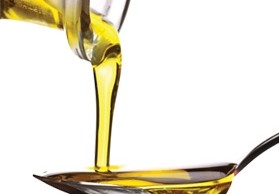Does Shailene Woodley have “Divergent” Views about Health?

Shailene Woodley is on the verge of becoming the new “IT” girl. She stars in the movie Divergent, which opened this weekend. The buzz is that the Divergent (first of a trilogy by author Veronica Roth) will be the next blockbuster in YA (Young Adult) book genre taken to the big screen (think Hunger Games and Twilight).
Woodley has been making the TV talk circuit to promote the film, but it is an article for the beauty blog Into The Gloss that is opening many eyes. In it, Shailene shares some of her health and beauty secrets, which she says are based on her interest in herbalism and “listening to taxi drivers” (see below). Some of her ideas seemed somewhat “divergent” from standard medical practices, so I thought I’d look into some of them.
“Clay is one of the best things you can put in your body.“
“One of my friends was making a clay toothpaste that you swallow instead of spit out. But I first heard about the benefits of eating clay from a taxi driver. He was African and was saying that, where he’s from, the women eat clay when they’re pregnant. Seriously—ask your taxi drivers where they are from and about their customs. You will learn a lot. So, I’ve discovered that clay is great for you because your body doesn’t absorb it, and it apparently provides a negative charge, so it bonds to negative isotopes. And, this is crazy: it also helps clean heavy metals out of your body.”- Shailene
 Geophagia, the deliberate consumption of earth, soil, or clay has been seen over time from different viewpoints: as a culturally sanctioned practice, as a consequence of poverty or famine, or as a psychiatric disorder called pica. Pica is the practice of craving substances with little or no nutritional value.
Geophagia, the deliberate consumption of earth, soil, or clay has been seen over time from different viewpoints: as a culturally sanctioned practice, as a consequence of poverty or famine, or as a psychiatric disorder called pica. Pica is the practice of craving substances with little or no nutritional value.
The habit of eating clay and is not uncommon in southern parts of the United States as well as urban Africa. Fine red clay is often preferred.
Geophagia is often observed in pregnant women or in those with iron-deficiency anemia. In cases of poverty and famine clay may serve as an appetite suppressant and filler.
One component of many clays is kaolin. Kaolin is a hydrated aluminum silicate. It works well as an anti-diarrheal agent, and is the main ingredient in Kaopectate. It can also be used topically to dry diaper rashes. Taken in excess it can cause constipation. It can bind heavy metals, but the amount of these in the diet is usually quite small and can be eliminated by the liver and kidneys. In addition, kaolin can interfere with the absorption of some drugs, such as the heart medicine digoxin, and antibiotics clindamycin, and lincomycin.
There is little evidence that clay has any clear benefits for use on a regular basis.
A Natural Way to Clean Your Teeth
“You can do something called ‘oil pulling’ where you swish coconut or sesame oil in your mouth when you wake up and spit it out. It’s amazing! It really makes your teeth whiter, because the plaque on your teeth is not water soluble, it’s fat-soluble. So the lipids have to dissolve in fats, which is why oil works in your mouth. I prefer sesame oil, but they’re both good.” — Shailene
 Oil pulling has been getting a lot of attention lately, although it has been a part of Ayurveda medicine for many years. Ayurveda is a holistic system of medicine which evolved in India some 3000-5000 years ago. It involves taking about a tablespoon of sesame, safflower, or coconut oil into the mouth and working it around the teeth for 10 to 2o minutes. The resulting milky white liquid is then spit out (into the trash-if you keep spitting it into your sink, you may clog your drain!). Bacteria in the mouth, which themselves have a fatty outer layer will get “stuck” in the oil and are thereby “pulled” out of the mouth. Proponents says it makes their teeth whiter, treated gingivitis and eliminates bad breath. Some even claim that it can cure about 30 systemic diseases ranging from headache, migraine to diabetes and asthma.
Oil pulling has been getting a lot of attention lately, although it has been a part of Ayurveda medicine for many years. Ayurveda is a holistic system of medicine which evolved in India some 3000-5000 years ago. It involves taking about a tablespoon of sesame, safflower, or coconut oil into the mouth and working it around the teeth for 10 to 2o minutes. The resulting milky white liquid is then spit out (into the trash-if you keep spitting it into your sink, you may clog your drain!). Bacteria in the mouth, which themselves have a fatty outer layer will get “stuck” in the oil and are thereby “pulled” out of the mouth. Proponents says it makes their teeth whiter, treated gingivitis and eliminates bad breath. Some even claim that it can cure about 30 systemic diseases ranging from headache, migraine to diabetes and asthma.
My search of the scientific literature found one small study which showed that oil pulling removed as many mouth bacteria as a standard mouthwash.
Chicago dentist Jessica T. Emery, DMD says “It all makes sense from a mechanical perspective. We know the primary cause of tooth decay is bacteria. While I certainly can’t support every claim that is out there, I do believe that this simple oral health technique will likely improve dental health.” But she cautions that oil pulling does not reverse the effects of tooth decay and that a regular oil-pulling routine should not replace routine dental visits and traditional at-home oral care.
“Another thing I like to do is give my vagina a little vitamin D.”
“I was reading an article written by an herbalist I studied about yeast infections and other genital issues. She said there’s nothing better than vitamin D. If you’re feeling depleted, go in the sun for an hour and see how much energy you get. Or, if you live in a place that has heavy winters, when the sun finally comes out, spread your legs and get some sunshine. [Laughs]”- Shailene
I had to reread this part of the interview 3 times, because I couldn’t believe what she was saying! But I briefly gave her the benefit of the doubt and, once again, went to look at the scientific literature to see if I could substantiate any of these claims.
Vitamin D can be used in postmenopausal women to help with vaginal dryness. There is also a study that found an association between low Vitamin D levels and a higher incidence of a nonspecific vaginal infection called bacterial vaginosis. But association doesn’t mean that low Vitamin D levels cause the infection!
Vitamin D is important for calcium metabolism. The two main ways to get Vitamin D are from the diet or from sunlight. The flesh of fatty fish (such as salmon, tuna, and mackerel) and fish liver oils are some of the best sources. Fortified foods (such as milk and some orange juices) provide for most of the vitamin D in the American diet.
How much sunlight would you need to get sufficient Vitamin D? Vitamin D researchers say that approximately 5–30 minutes of sun exposure between 10 AM and 3 PM at least twice a week to the face, arms, legs, or back without sunscreen will usually lead to sufficient vitamin D synthesis.
Certainly taking off all your clothes and opening up your legs for an hour will put you more at risk for burning than anything else. There’s such a thing as an all-over tan, but—yeesh!



























0 comments